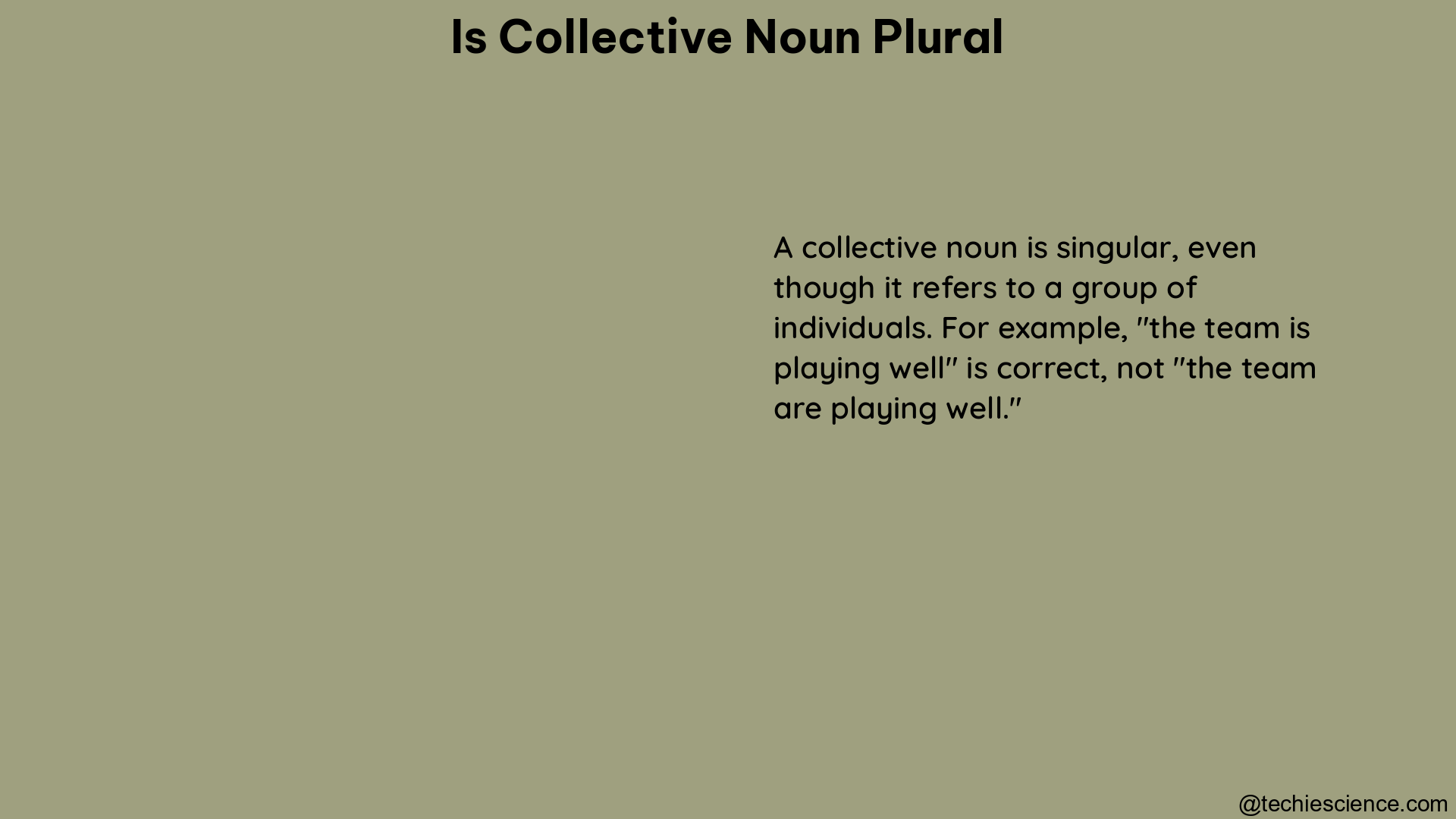Collective nouns are a fascinating aspect of the English language, as they represent a group of people, animals, or things, yet they can be treated as either singular or plural, depending on the context. Understanding the nuances of collective nouns is crucial for effective communication and proper grammar usage. In this comprehensive guide, we will delve into the intricacies of collective nouns, exploring their definition, singular or plural usage, verb agreement, and providing a wealth of examples to solidify your understanding.
Defining Collective Nouns
A collective noun is a word or phrase that represents a group of people, animals, or things, but is treated as a single entity. These nouns can be used to describe a collection of individuals or items that share a common characteristic or purpose. Some examples of collective nouns include:
- People: committee, family, jury, team, audience
- Animals: herd, flock, swarm, school (of fish)
- Things: collection, fleet, bundle, set, group
Collective nouns are unique in that they can be used to refer to the group as a whole or to the individual members within the group, depending on the context and the writer’s or speaker’s intent.
Singular or Plural Usage of Collective Nouns

The question of whether collective nouns are singular or plural can be a bit complex, as it varies between different English-speaking regions and contexts.
United States English
In American English, collective nouns are typically treated as singular, even if they appear to be plural. For example, the sentence “The team is practicing for the big game” would be considered correct, as the collective noun “team” is treated as a single unit.
However, there are exceptions to this rule. If the focus is on the individual members of the collective noun, a plural verb may be used. For instance, “The team are arguing about the best strategy” would be appropriate if the emphasis is on the individual team members’ actions.
United Kingdom English
In British English, the usage of collective nouns can be more flexible. Collective nouns can be treated as either singular or plural, depending on the context and the writer’s or speaker’s preference. For example, both “The family is going on vacation” and “The family are going on vacation” would be considered correct in the UK.
This flexibility in UK English allows for more nuanced expression, as the singular form can emphasize the group as a whole, while the plural form can highlight the individual members within the collective.
Plural Collective Nouns
In addition to the singular and plural usage of collective nouns, it is also possible to make collective nouns plural. This is done by adding an “s” to the end of the word, indicating the presence of multiple groups.
For example:
- Singular collective noun: “The committee is meeting today.”
- Plural collective noun: “The committees are meeting today.”
This pluralization of collective nouns can be useful when referring to multiple groups or collections, rather than a single group.
Verb Agreement with Collective Nouns
Verb agreement is a crucial aspect of using collective nouns correctly. The verb used with a collective noun should match the intended meaning and emphasis of the sentence.
Singular Verb Agreement
When the collective noun is being treated as a single unit, a singular verb should be used. This is the more common usage in American English, as well as in formal or academic writing.
Example:
– “The jury is deliberating the case.”
– “The herd of elephants is moving across the savanna.”
Plural Verb Agreement
If the focus is on the individual members of the collective noun, a plural verb should be used. This is more common in British English and can also be used in American English when the emphasis is on the individual members rather than the group as a whole.
Example:
– “The committee are debating the proposal.”
– “The family are planning their summer vacation.”
It’s important to pay attention to the context and the intended meaning when choosing the appropriate verb form to use with a collective noun.
Common Collective Nouns
To further illustrate the usage of collective nouns, here is a table of some common examples, along with their singular and plural forms:
| Collective Noun | Singular Verb | Plural Verb |
|---|---|---|
| Audience | The audience is applauding. | The audience are applauding. |
| Choir | The choir is singing. | The choir are singing. |
| Class | The class is studying. | The class are studying. |
| Committee | The committee is meeting. | The committee are meeting. |
| Crew | The crew is working. | The crew are working. |
| Family | The family is going on vacation. | The family are going on vacation. |
| Flock | The flock is grazing. | The flocks are grazing. |
| Group | The group is discussing the project. | The groups are discussing the project. |
| Herd | The herd is moving. | The herds are moving. |
| Jury | The jury is deliberating. | The juries are deliberating. |
| Panel | The panel is presenting its findings. | The panels are presenting their findings. |
| Staff | The staff is preparing for the event. | The staff are preparing for the event. |
| Swarm | The swarm is buzzing. | The swarms are buzzing. |
| Team | The team is practicing. | The teams are practicing. |
This table provides a comprehensive overview of common collective nouns and how they can be used in both singular and plural contexts, along with the appropriate verb agreement.
Conclusion
Mastering the usage of collective nouns is an essential skill for effective communication and proper grammar. By understanding the nuances of singular and plural usage, as well as the importance of verb agreement, you can confidently navigate the complexities of collective nouns and ensure your writing or speech is clear, concise, and grammatically correct.
Remember, the key to using collective nouns effectively is to pay attention to the context and the intended meaning, and to adjust the verb form accordingly. With practice and a solid understanding of the principles outlined in this guide, you’ll be well on your way to becoming a master of collective noun usage.
References:
- Collective Nouns: Definition, Examples, and Usage
- Are Collective Nouns Singular or Plural?
- Verb Agreement with Collective Singular Nouns

Hi…..I’m a graduate with a Bachelor’s degree in English Literature. I wish to do a Masters in the same field someday and continue my career in Academia.
Let’s connect through LinkedIn: